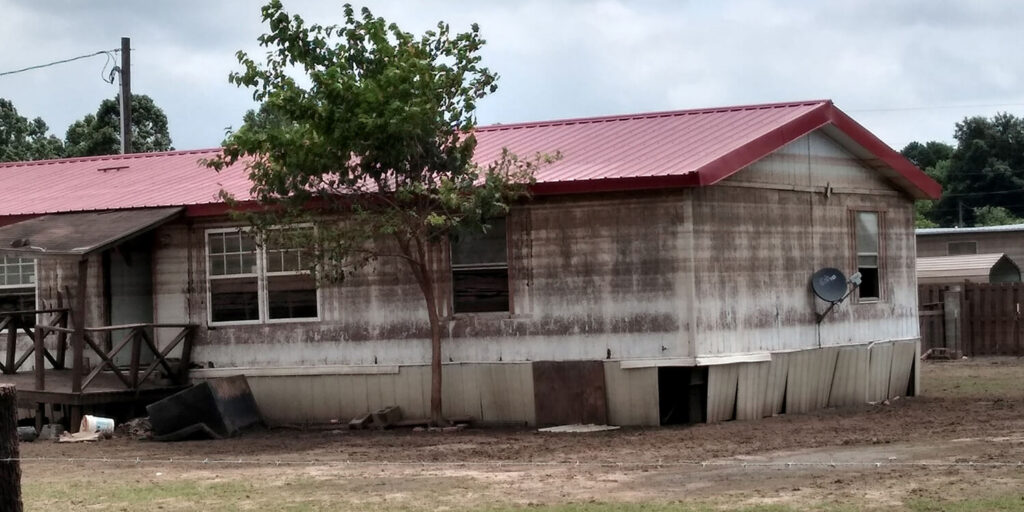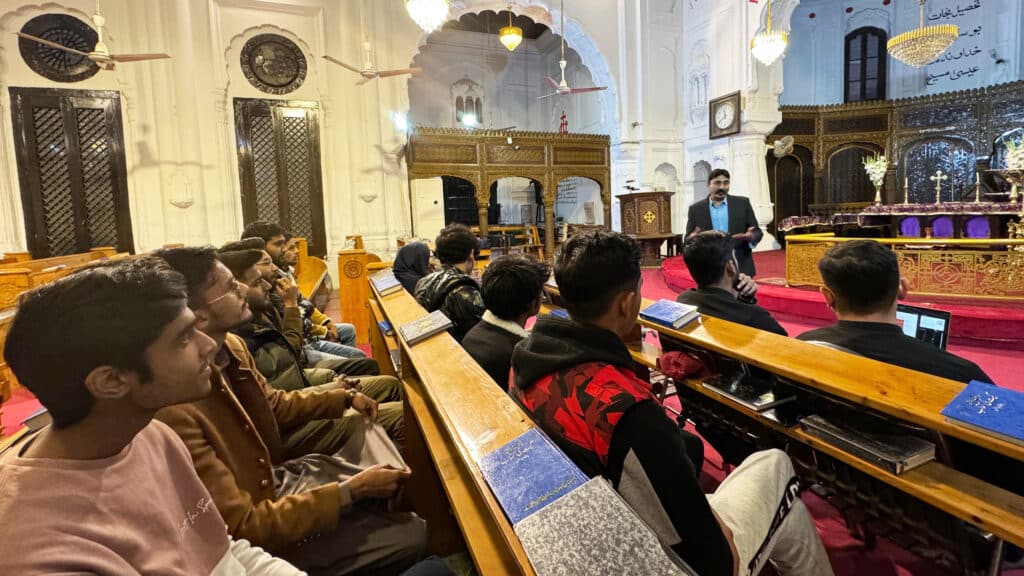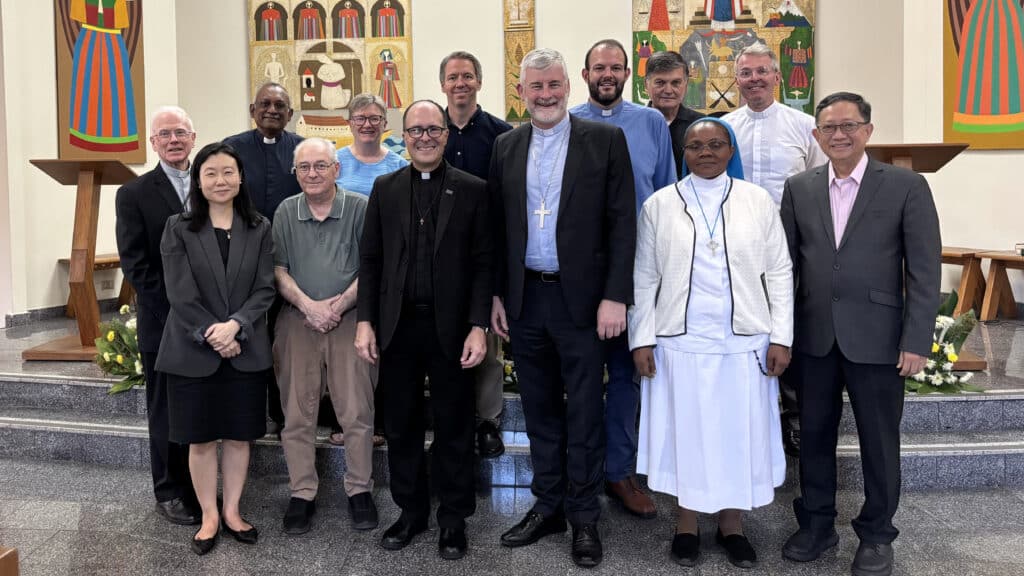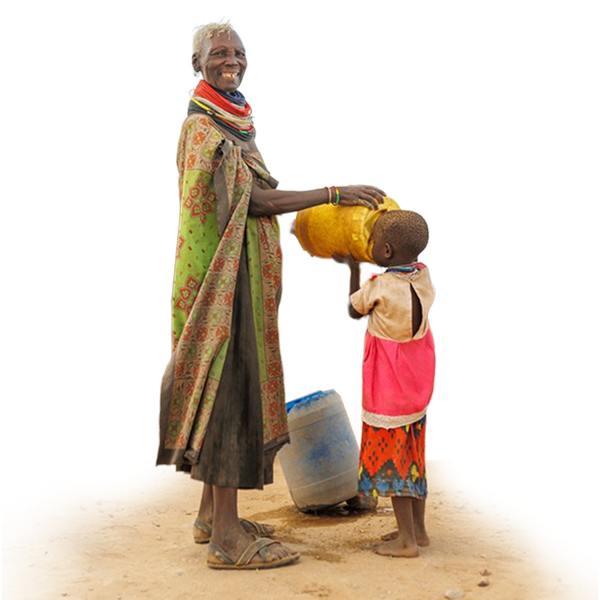By Christie R. House
September 14, 2019 | ATLANTA
Flooding of the Arkansas River extended for three and a half weeks in May 2019, breaking decades-old records for high water levels in many towns. Heavy rainfall, coupled with the periodic release of floodgates to control swollen reservoirs in Oklahoma, caused the river to rise and stay at historic levels. In Fort Smith, on the Arkansas-Oklahoma border, the river crested 10 feet above flood stage.
The Rev. Janice Sudbrink, minister for pastoral care at First United Methodist Church in Fort Smith, says most people didn’t see the flood coming. “When the flood waters started to rise in Fort Smith, we didn’t realize it was going to be as bad as it was,” she said. Church members mobilized to help people move out of the way.
“We really only had about 24 hours to get people and their belongings out of their homes,” Sudbrink told Arkansas communicators in June. “Now, they have places to stay and they are safe, but they need spiritual care. They are grieving the loss of their homes.”
All along the 250-mile Arkansas River Valley, from Oklahoma to Mississippi, flooding displaced families and businesses on both sides of the river. In Fort Smith alone, nearly 500 homes were flooded, with more homes affected in Conway, Little Rock, Pine Bluff and further downstream in Pendleton, Arkansas.
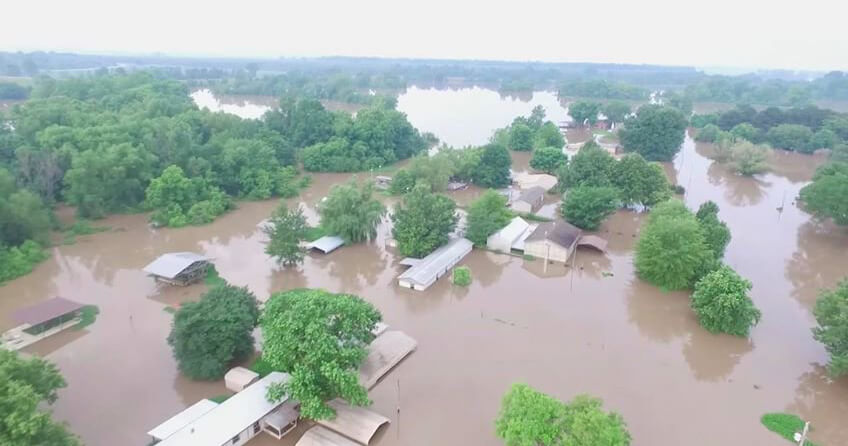
PHOTO: STAN BEATY, KATV
Janice Mann, the Arkansas Conference disaster response coordinator, says, when it was all over, FEMA had declared 13 counties eligible for individual (individual and family) assistance. “Four additional counties were declared as needing public (infrastructure) assistance,” she said. “We have over 1900 Federal Emergency Management Agency registrations.”
Collaboration is key in response
In May, the Arkansas Conference received an immediate solidarity grant from the United Methodist Committee on Relief. This allowed Byron Mann, the Arkansas Conference’s Volunteer in Mission coordinator, to send teams to areas needing assistance. They worked with local emergency response officials to find people needing help to muck out the damaged portions of their homes.
The conference facilitated just-in-time training to ensure additional volunteer recruits were ready to provide basic clean-up and a caring presence for flood survivors. When the river flooding started, the conference was already responding to spring tornadoes in the state. Later on, UMCOR facilitated a recovery summit for more in-depth training.
In Fort Smith, a team went to Keith Reeves’ house, which was the last to flood on his block. He thought they’d be OK, but the family evacuated as instructed. “We came back the next morning and the front of the home had about 8-10 inches of water in it,” he explained.
Shelley Lee, one of the United Methodist volunteers working on the house, said mucking out is the first stage in a three-step process. “After mucking out, the house has to be cleaned to try to get rid of as much mold as possible. Then it’s sanitized to get rid of the rest of it.” Her team took care of step one.
“It is a fantastic thing, what you do,” said Reeves, “and some people wouldn’t be able to make it without you.”
Four months later, people are still in the process of recovery. “We are in a slow transition from relief to recovery,” Janice Mann explained. “At this point, basic needs have been met. Now, repairs, rebuilds and replacements are coming up next. We work with partners at Arkansas VOAD (Volunteer Organization Active in Disasters), and with local partners, state partners and FEMA. We’re a close-knit group.”
UMCOR support for recovery
This month (September 2019), UMCOR approved two additional grants totaling $160,000 for Arkansas River Flood Recovery. These allow the conference to move ahead with plans to facilitate case management in five areas and ollaborate with VOAD and other partners to further assist people with their recovery.
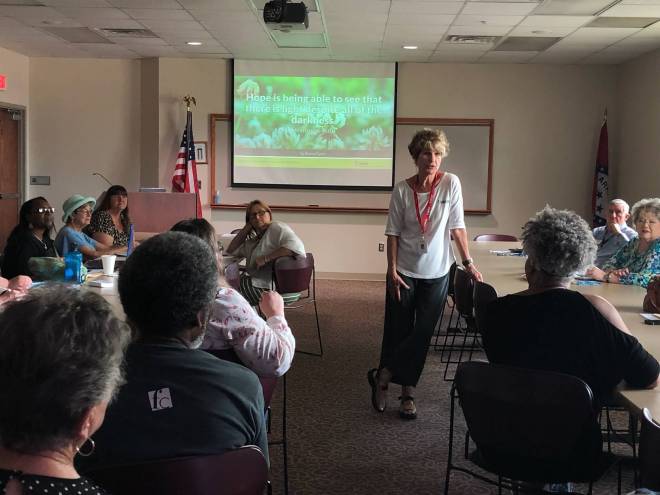
PHOTO: SHERI MATHEWS
The conference had already started some case management, taking on what it could with the resources it had. “Now, with the recovery grant, we can do more,” Janice Mann said.
Catherine Earl, UMCOR’s director for U.S. Disaster Response and Partner Relations, says that, while the Arkansas flooding is seen as a “low attention” disaster, it caused significant damage. “Thankfully,” she notes, “leaders like Janice and Byron Mann have been responding since day one – coordinating a host of other caring and equipped volunteers to help survivors take their next brave steps toward recovery, undergirded by funding from UMCOR.”
Meanwhile, the Arkansas disaster response office continues to offer training, seeking to engage more people as volunteers in mission. They have reached out to the North Central Jurisdiction United Methodist Volunteers in Mission office to make Arkansas a destination for teams from other states looking to work in the region.
“For years, the Manns have dedicated their time and talent to disaster ministry, bringing hope and concrete assistance to bring about true recovery for those who would otherwise receive little or no support,” Earl said. “Janice and Byron emulate God’s love with every word and every action!”
As for Reeves, in Fort Smith, he’d just like to say thank you. “I don’t know what all goes into it and where their funding comes from, but whoever has made this possible, keep doing what you are doing.”
United Methodists know the funding comes from their continuous collective support for UMCOR’s disaster response ministries and the rest comes from dedicated volunteers like the Manns and their teams in Arkansas. Support U.S. Disaster Response, Advance # 901670.
Christie R. House is the senior writer/editor for Global Ministries. Thanks to the Arkansas communications team for earlier reporting and on-the-ground interviews.
